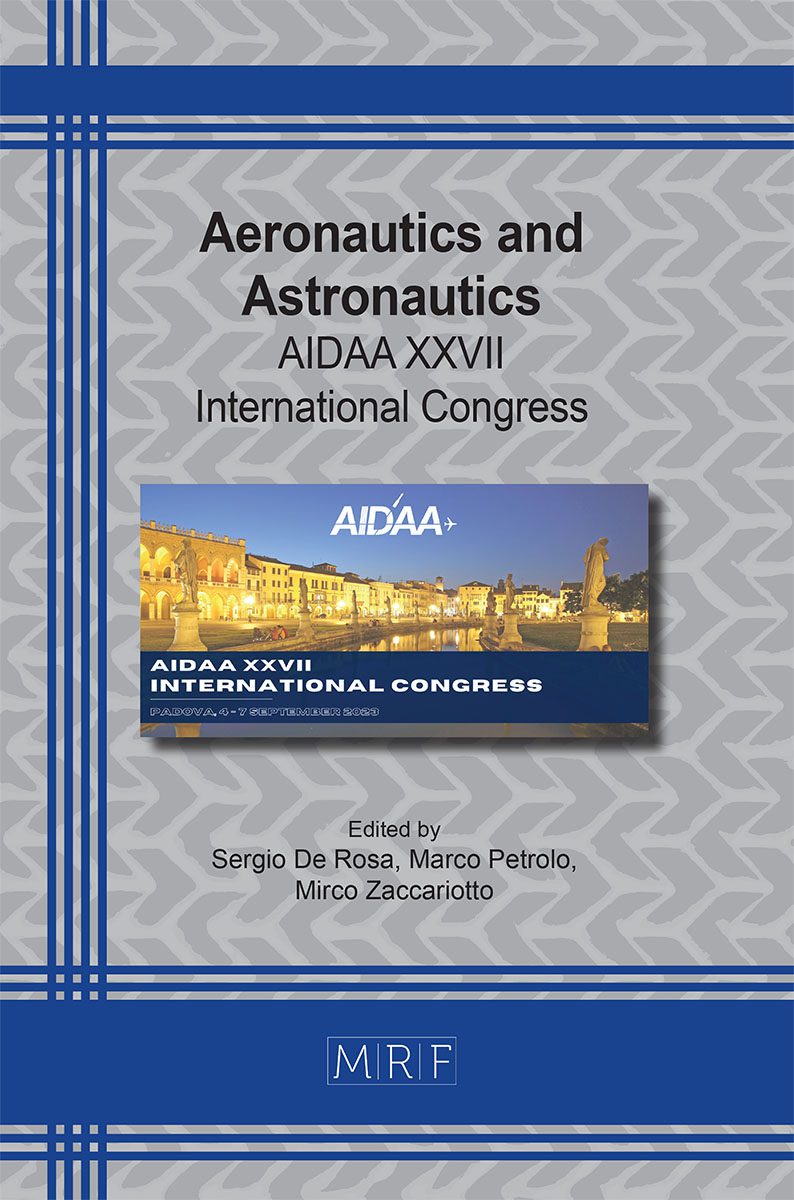Electric conversion of a general aviation aircraft: a case study
Sergio Bagarello, Ivano Benedetti
download PDFAbstract. This study analyses the process required to convert a conventional, air-breathing, piston-powered, General Aviation (GA) airplane to fully electric propulsion. The work is configured as a feasibility study for such modifications with the intent of setting a path for similar electric conversion programs on GA airplanes. The motivation behind industries’ interest in alternative propulsion is examined and a full comprehension of the characteristics of the plane in question is achieved through the acquisition of transversal knowledge, examining the aircraft both from the engineering and real-world user points of view. Electric motor, batteries, auxiliary systems and implementation considerations were all made in accordance with regulatory authorities’ requirements, with the purpose of making the project to comply with EASA CS Part 23. The present work analyses the performances expected from the electric plane and compares them with the standard aircraft evaluating the project’s pros and cons. Considerations regarding typical mission profiles show how the electric powerplant will allow the airplane to outperform his conventional counterpart in terms of rate of climb, pollutant emission reduction, noise levels and operating costs. Such gains are however counterbalanced by the detriment of range and endurance performances, which might be deemed acceptable considering the specific plane’s intended use. The study shows how, even though close integration in electric GA aircrafts is desirable since the first stages of conceptual design, piston-to-electric conversions are possible and may indeed contribute to mitigate aviation climate impact.
Keywords
Aircraft Electric Conversion, Electric Propulsion, Electric General Aviation, Aircraft Conceptual Design
Published online 11/1/2023, 4 pages
Copyright © 2023 by the author(s)
Published under license by Materials Research Forum LLC., Millersville PA, USA
Citation: Sergio Bagarello, Ivano Benedetti, Electric conversion of a general aviation aircraft: a case study, Materials Research Proceedings, Vol. 37, pp 431-434, 2023
DOI: https://doi.org/10.21741/9781644902813-95
The article was published as article 95 of the book Aeronautics and Astronautics
![]() Content from this work may be used under the terms of the Creative Commons Attribution 3.0 license. Any further distribution of this work must maintain attribution to the author(s) and the title of the work, journal citation and DOI.
Content from this work may be used under the terms of the Creative Commons Attribution 3.0 license. Any further distribution of this work must maintain attribution to the author(s) and the title of the work, journal citation and DOI.
References
[1] Kousoulidou M, Lonza L, European Aviation Environmental Report 2016. EASA, EEA, EUROCONTROL; JRC99523, 2016
[2] Brelje, BJ, Martins, JRRA, Electric, hybrid, and turboelectric fixed-wing aircraft: A review of concepts, models, and design approaches. Progress in Aerospace Sciences, 104, 1-19, 2019. https://doi.org/10.1016/j.paerosci.2018.06.004
[3] Raymer, D., Aircraft design: a conceptual approach, American Institute of Aeronautics and Astronautics, 2012. https://doi.org/10.2514/4.869112
[4] GlobalAir.com, “Socata Tampico TB-9“, GlobalAir, https://www.globalair.com/aircraft-for-sale/specifications?specid=523, 2023
[5] AeroClub Palermo DTO Flying School, Manuale di impiego – Velivolo Socata TB-9, Palermo (PA), 90137 Italy, 2019
[6] Lycoming Engines, O-320 Series Operator’s Manual, Williamsport, PA 17701 USA, 2006
[7] AeroClub Palermo DTO Flying School, Modulo di caricamento e centraggio – Velivolo Socata TB-9, Modello CO5, Ed.1, Palermo (PA), 90137 Italy, 2019












